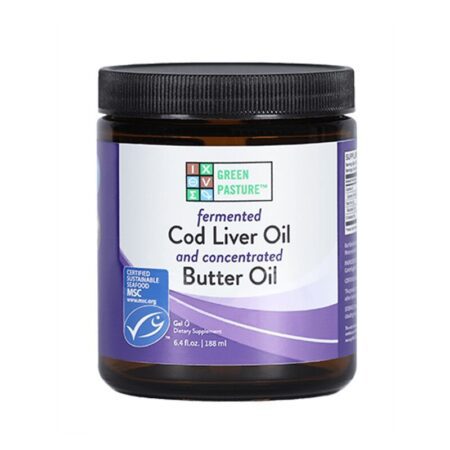What is the best toothpaste for cavities? We have options you may have never heard of before, such as Theodent and Nano Dentite.
Because when a dentist tells you that you have caries, it usually means that the procedure on the tooth is inevitable. We don’t want to get to that point.
On the other hand, it seems that everyone in life sooner or later encounters caries and that it is quite a common thing. Furthermore, a very aggressive tooth disease that, if left untreated, can destroy an entire tooth in a very short period of time.
Of course, then far more serious problems arise. There are a large number of bacteria in our mouths, some of which attack tooth enamel, soften it and with the remnants of food create a pre-stage of caries called plaque.
Every day we try to remove this unfortunate plaque from the teeth by brushing and oral hygiene, but there are hard-to-reach places between the teeth that are an ideal starting point for the development of caries.
Patients often ask me – what can I do to prevent this? Although the answer may seem prosaic, ie. 1000 times already read or heard, the fact is that regular and proper brushing of teeth, two to three times a day with a soft brush, and the use of dental floss and rinsing fluids, can greatly prevent caries.
On the other hand, you must not lose sight of the fact that regular visits to the dentist are also crucial in preventing this unpleasant and inevitable disease. Namely, the dentist will detect caries in time while it is still small, which means that the repair itself will be simpler and painless.
In the end, I would conclude that there is a justified fear of caries because, in the long run, it can really cause serious problems that can lead to tooth loss. In this case, a replacement is sought in implant and prosthetic procedures, which often entails more serious financial expenses.
When we talk about caries, it should certainly be mentioned that it is one of the most widespread diseases today because it affects almost 90 per cent of the world’s population, which is about 5 billion people.
We have already written about caries in children, so it is quite clear that caries very often affects children’s teeth, but it also affects teenagers, middle-aged people and the elderly. To begin with, we will mention how caries develops, and it is influenced by several factors.
Caries is actually damage to the hard tooth tissues, ie dentin, and in the people, the tooth affected by the damage is often called rotten. Caries begins on the surface of the tooth by the decomposition of enamel (demineralization) and then penetrates into the depth and width, affecting other structures of tooth tissue.
Namely, bacteria from the oral cavity accumulate on the enamel surface of the tooth and form a bacterial layer called plaque.
It is a dynamic process consisting of several stages of demineralization and remineralization that occur over a period of time.
Due to the easier accumulation of food residue and bacteria from food, caries most often forms in small depressions in the biting surfaces of the posterior teeth, between the teeth and in other places that are insufficiently and difficult to clean.
Extremely high potential risks of caries are tooth surfaces that are covered with dental plaque.
That is why it is extremely important to brush your teeth regularly, use dental floss or an interdental brush and, if necessary, perform a professional, mechanical cleaning of your teeth at the dentist once or twice a year in order to remove plaque.
Calculus (calculus removal is also known as debridemen) and plaque removal are not the same as teeth whitening.
Cavity toothpaste
There are two types of caries, and they are superficial and deep. In the initial phase, caries is visible as a white spot that affects only the surface layer of the enamel and has no significant symptoms.
Dental tissue damaged by caries cannot be regenerated, and if it is not removed in time, it quickly spreads laterally and affects an increasing area of the tooth.
Once the damage, that is. caries from enamel and dentin penetrates to the inside, it will spread very quickly, and the tooth becomes sensitive to stimuli and sweet, hot and cold food or drink.
If there is a crack in the tooth or there are depressions, caries will also spread faster due to the morphology, ie a thinner layer of enamel. In deep caries, the dental pulp that contains nerve fibres is affected, so it is necessary to first start cleaning the root canal or treatment.
Although there are methods of treating the root canal of the tooth and treating local infections, in many situations of deep caries the solution will have to be tooth extraction.
As countless times before, we reiterate that proper and regular oral hygiene, a healthy diet and regular dental checkups are important factors in maintaining dental health.
To properly maintain the health of the oral cavity, it is recommended to use a toothbrush, interdental brush or floss at least twice a day.
Tooth enamel can be strengthened by ingesting the right vitamins and materials, which is why proper nutrition is important. Reduced intake of refined sugars is desirable when choosing quality food.
As cooked and baked foods are increasingly consumed these days, food is less and less chewed. Unfortunately, it also has an impact on dental and gum health.
Consumption of solid foods stimulates chewing and salivation. Saliva is extremely important because it protects teeth and reduces acidity in the mouth. Carrots and onions, on the other hand, neutralize the action of bacteria in the mouth.
As we have already pointed out, if you or your dentist notice caries, it is necessary to treat the tooth as soon as possible so that the damage does not reach the dental pulp.
The moment a tooth starts to hurt it means that caries has already passed through the enamel and reached the soft tissue and nerve, which may create the need to extract the tooth.
Caries is damage to the tooth, which can occur when the bacteria that causes tooth decay releases acids that attack enamel, which can lead to a small hole in the tooth, which, if left untreated, can lead to infection and severe pain and even pain. the dying of the tooth itself.
No one is safe from tooth decay. It can occur at any age, whether it is a child or a fully grown person.
When the bacteria that causes decay to come into contact with sugar or food and beverage residues, they together form an acid, which attacks the tooth enamel, causing a decrease in the mineral substances in it.
This can happen if you often eat and drink drinks full of sugar. This leads to the fact that this cycle of acid release is repeated, and during a certain time, the enamel weakens and a cavity or caries is created.
Toothpaste to reverse cavities
In addition, the dentist can check for soft or sticky parts by touch, or even remove the tooth, which may indicate the cause of decay.
The most common way to treat caries is to clean the tooth and fill the resulting cavity with a fluid material, which releases fluoride ions, and aim to prevent the further spread of caries.
But a new novel way is with hydroxyapatite, a newly discovered, safer, and more effective method to treat tooth decay.
If the caries is in an advanced stage but has not yet reached the nerve, a medicine based on calcium hydroxide is used, whose task is to regenerate the tooth.
Both children and adults have caries, and there are many reasons why it occurs. In any case, in order to act preventively, it is very important to maintain regular oral hygiene and visit the dentist.
We should also pay attention to the food we eat, which is one of the important factors that directly affect dental health.
In the first phase, caries is visible as a white spot that affects only the surface layer of enamel and has no significant symptoms. If it is not noticed and repaired in that phase, caries further penetrates the enamel and enters the dentin.
Then it spreads much faster than on tooth enamel and the tooth becomes sensitive to sweet, hot and cold food or drink. A tooth affected by caries cannot be regenerated, but the damaged tissue needs to be removed and supplemented with materials such as composite, ie white filling.
Bacteria are the main culprit for caries, but there are also other things like acids and carbohydrates. Namely, bacteria from the oral cavity accumulate on the enamel surface of the tooth and form a bacterial layer called plaque.
By far the best and most effective way is regular, but also proper oral hygiene, as well as a healthy diet. It is full of vitamins and minerals. Nothing without them.
If you take care of how many times a day you brush your teeth and what food you consume, chances are high that caries will bypass you, and if you include a visit to the dentist at least once every six months, you can be completely at peace.
Another good way is control. Retaining plaque on the surface of the tooth leads to the development of caries, and this is exactly what we want to prevent.
There are places on the teeth where plaque is most often formed and retained.
Its control and removal are possible both in the office and by the individual. In order for the results to be longer-lasting, it is necessary to use mouthwash with chlorhexidine.
Fighting tooth decay also requires increasing your intake of fat-soluble vitamins and minerals. A diet rich in vegetables, especially green leafy vegetables, and foods rich in healthy fats such as coconut oil and avocados (combined with nuts and seeds) make for an ideal anti-caries diet.
Prevention is very important in caries because if the tooth is brought to the final stage of decay, implant and prosthetic procedures are needed, which are significantly more expensive than fillings.
The most common symptoms are pain, increased sensitivity of the teeth to hot and cold, as well as sweet foods that warn us that something is wrong with the teeth. These symptoms appear only when caries has passed enamel and reached the dentin.
At the beginning of caries, the patient has no noticeable symptoms. The reason why the symptoms are not noticeable right at the beginning is that the site of caries has no nerves, so caries cannot cause pain.
Over time, sensitivity to sweets or colds can increase or appear spontaneously for no particular reason, and then it is necessary to immediately visit a dentist who will remove the missing part of the tooth and cure it with dental filling or fillings.
If you have any questions or suspect caries, be sure to contact your dentist in time and check with his what is the best toothpaste for cavities for you.


















